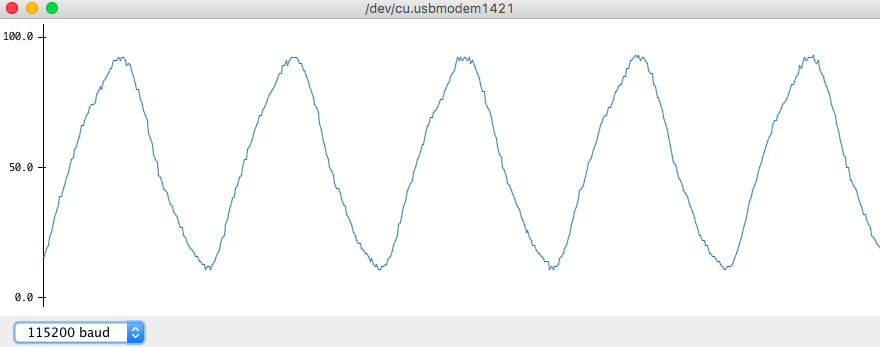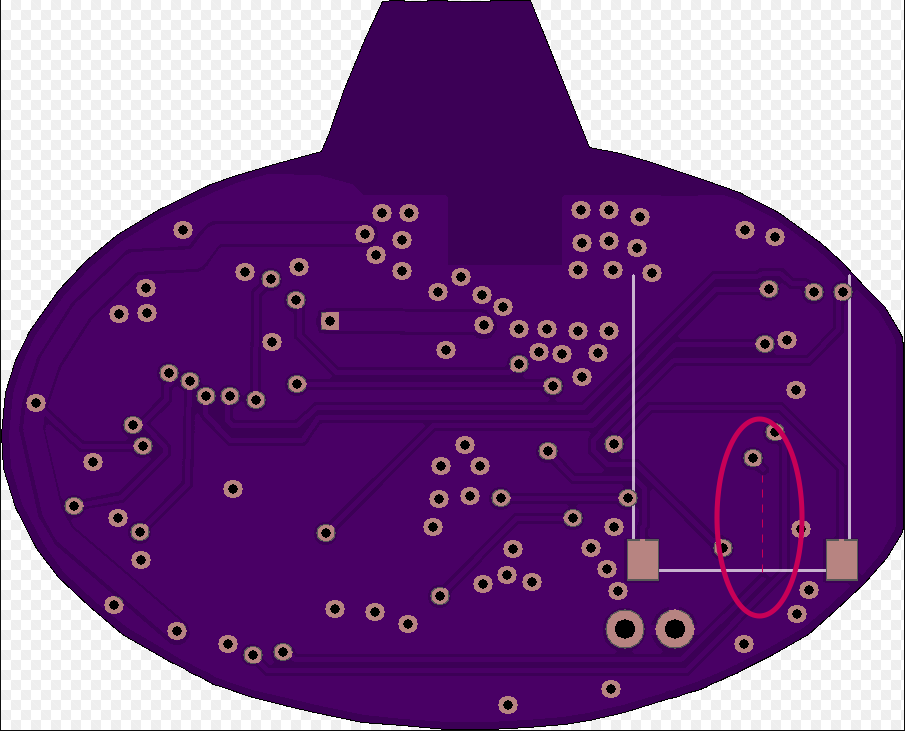-
Microphone and Accelerometer Working!
02/24/2017 at 02:55 • 0 commentsHorray! Now that the Teensy issues are solved I have been making super progress!
- The Accelerometer is working. I have it configured as a tap detector. I had to modify some libraries :( which will make code reuse a little pain, but it works!
- The microphone is working better than I expected. Actually, it is so sensitive, it is easy to overdrive it just by yelling while the badge is on your chest. Here's a screenshot of me humming a tone, while looking forward with the badge on my chest.
![]()
-
It's Alive!!!!!!!!!!
02/24/2017 at 01:46 • 0 commentsHooray,
Thanks to some helpful guidance from Paul on the PRJC forum and I found a missing trace on one of the USB lines. I repaired it and am now talking with the Teensy. A huge step forward!
NOTE: the new version of the board does NOT have this mistake.
![]()
Next step, start talking with the accelerometer and microphone!
-
Do you have a good attention to detail?
02/23/2017 at 02:29 • 0 commentsHi Project followers! Do you have a good eye for soldering mistakes? I have posted detailed photos of the current board that is not working.
If you spot a smoking gun I will forever be in gratitude!
-
Trying a new PCB
02/16/2017 at 05:07 • 2 commentsWell, still no luck getting the current PCB up and running with the Teensy. I have decided to try making a new one.
- I improved the oscillator grounding
- I moved things around to make it a little easier to debug
- I have made the SMD pads to the teensy longer to make it easier to do hand touch-up soldering.
The main challenge I think is that I am trying to go straight from breadboarding to miniaturization. This makes it a bit harder to debug, not to mention solder. Right now I am not using a stencil which makes the solder paste application very tedious and error prone. Hopefully these improvements will make it a bit easier. You can find the new board on oshpark here:
-
Custom Teensy Bringup
02/07/2017 at 04:43 • 0 commentsI am having trouble getting my custom Teensy LC to boot up properly. The teensy is getting programmed by the bootloader chip and I see the crystal oscillator start running, but I am not getting any USB comms whatsoever. If anyone has any ideas, you can see more details and post a reply on the prjc forum here: https://forum.pjrc.com/threads/41994-Custom-Teensy-LC-with-MK02-accepts-bootloader-but-no-USB?p=132921
-
Breadboard Prototype
02/03/2017 at 05:13 • 0 commentsBefore manufacturing a fully miniaturized system it is always wise to prototype at a larger scale first. This will help find bugs that will reduce the likelyhood of having to do a board respin later. In my case, must of the components I wanted to work with could easily be bought on Adafruit of Sparkfun with easily breadboardable headers.
In this breadboard prototype, I connected two Teensy LC micro-controllers to two wireless transceivers, microphones, speakers, etc. I wrote some code to configure one as a transmitter and one as a receiver to test the communications protocol/procedure, bitrates, and the system as a whole. Here are some of the lessons I learned:
- The 3.3V regulator on the teensy is not powerful enough to power the receiver and speaker at the same time. I needed to have an external, higher-power regulator.
- The Arduino library for the RF transceiver doesn't support the high-data-rate mode so it had to be modified for this application.
- Any mic used needs high gain in order to be able to hear a human voice while attached to a lapel. Because a mic amplifier takes up valuable space and power I have found a mic that has an internal low-power amplifier. In addition, the teensy has an internal amplifier than can be used if additional gain is needed.
- I thought the RF module had built features that made it simple to operate ( such as a power-on-reset feature) but it has been proven that it doesn't. Therefore, I have found that additional pins need to be connected to support all the modes I need.
- Some times the Teensy doesn't play well with the RF library, therefore a manual reset button is a must and board space must be used.
- The speaker amplifier consumes considerable power so it is necessary that I choose an amplifier that has a shutdown mode.
Star Trek Communicator Badge
In the true spirit of Star Trek, this communicator badge is completely autonomous, while fitting in the form factor of an original badge
 Joe
Joe
